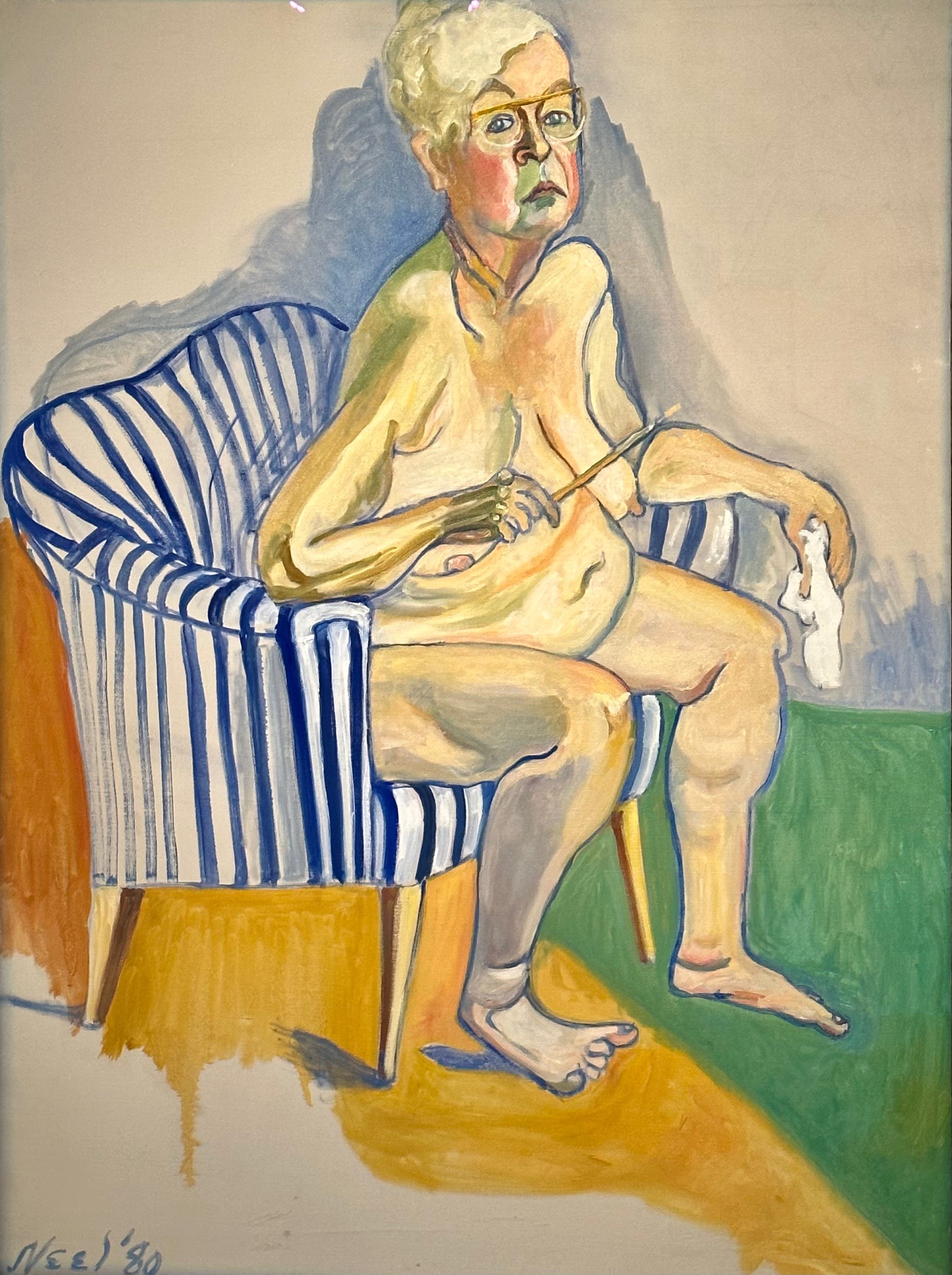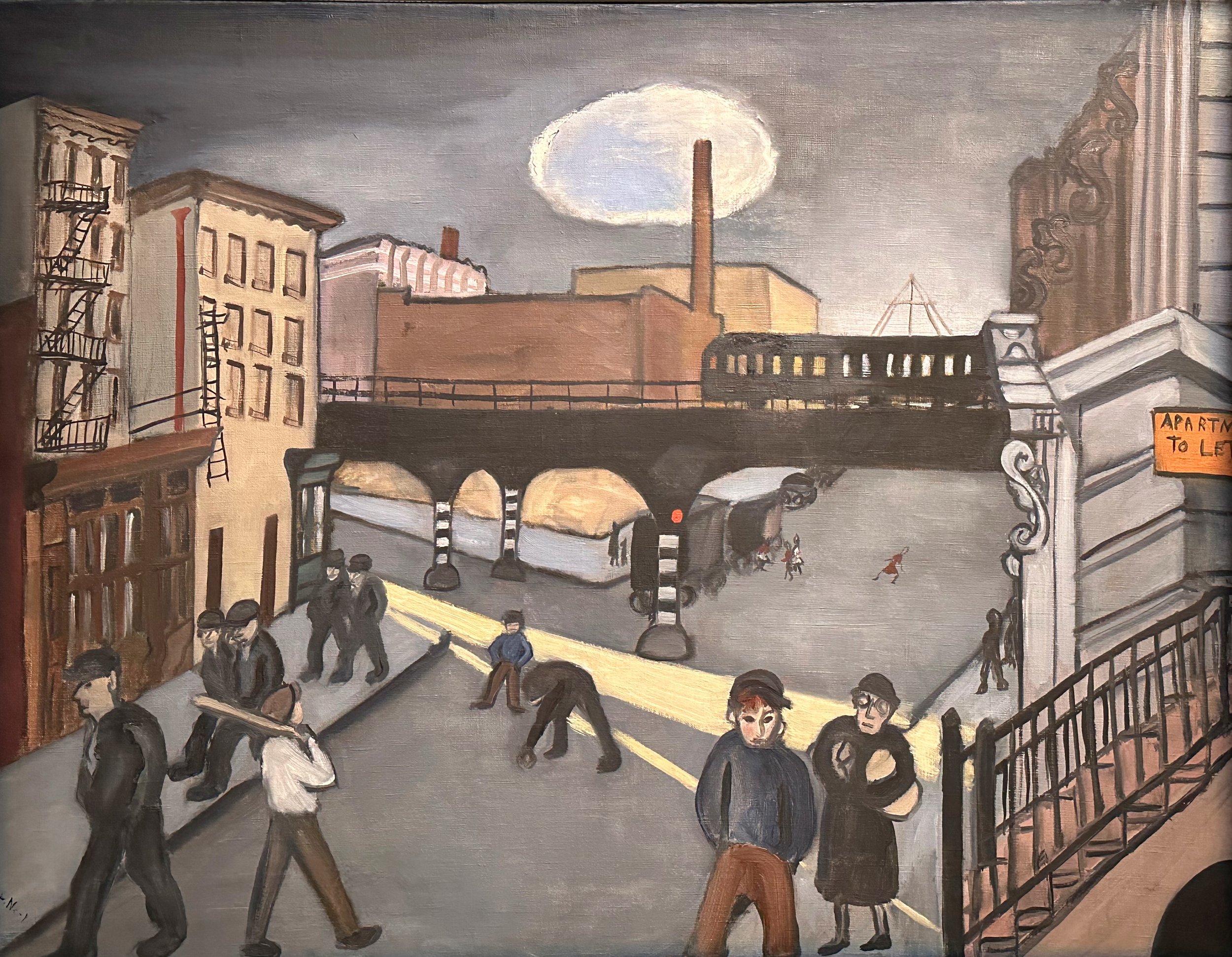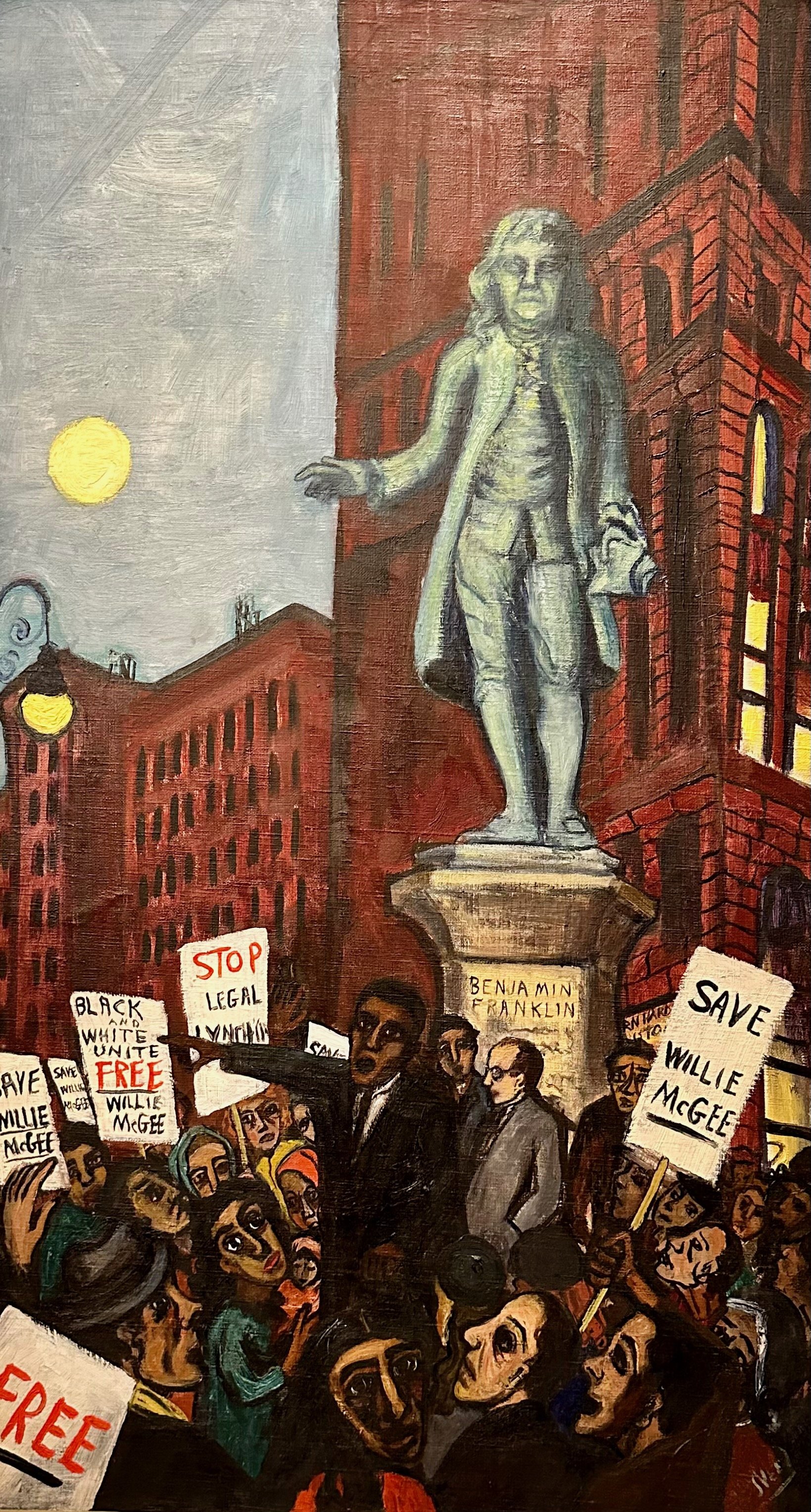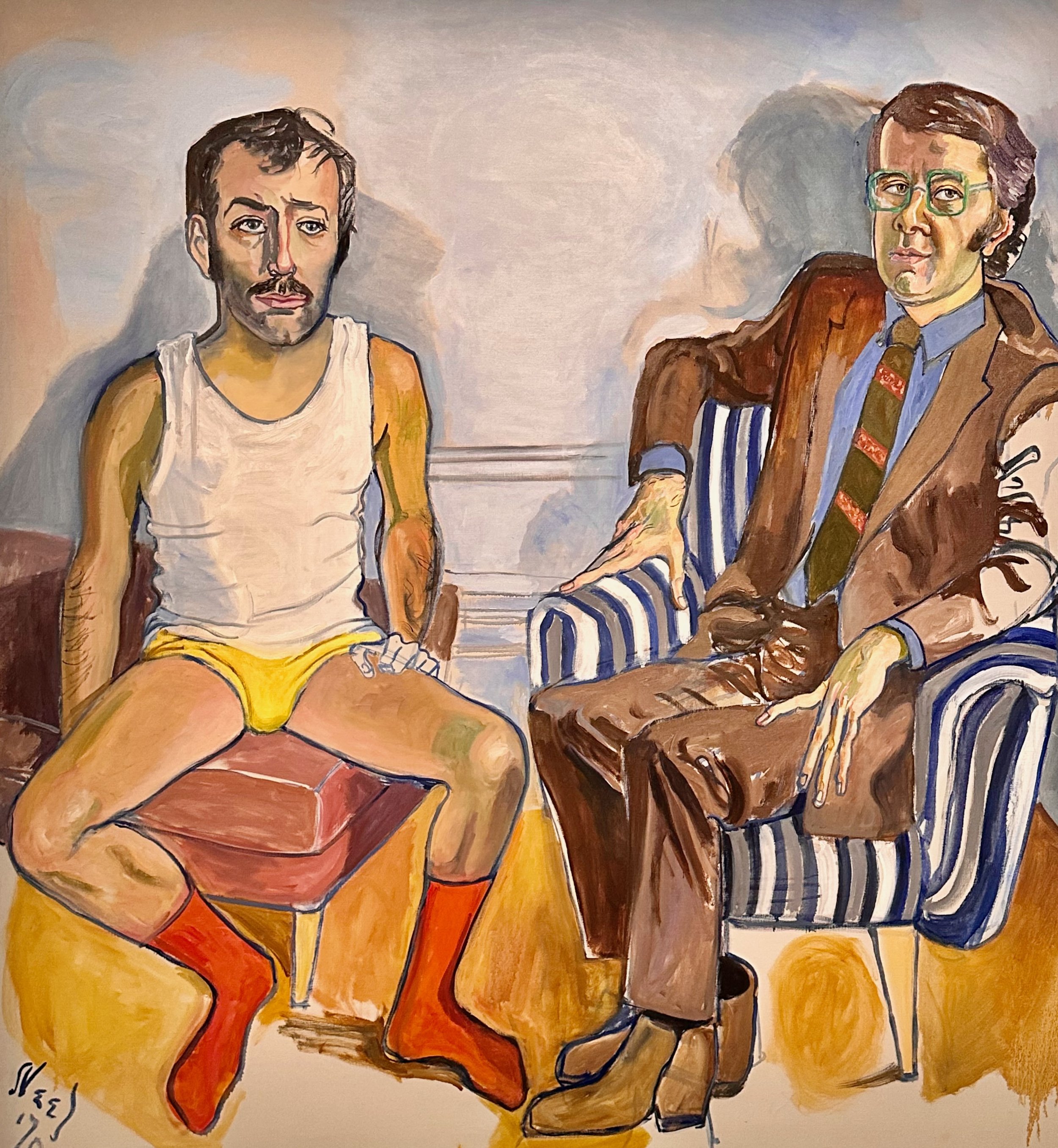The Duke of York pub in Fitzrovia, highlighted by the BT Tower. Today it is the only known sign with the mug of Prince Andrew (the actual Duke of York) on it.
Many pub signs around London bear a coat of arms, a symbol of officialdom — a globe a horse, or a bell — or a historical figure. But none probably stands out more than Prince Andrew on the sign of The Duke of York pub in Fitzrovia, Central London. Licensed in 1767 and rebuilt in 1897, the Duke is now a small and popular pub operated by Greene King brewery, tucked away at the top end of Rathbone Street. In 2014, Prince Andrew, or the present Duke of York, gave permission for his likeness to be used on the pub sign. Igor Babailov, a prolific Russian-born American artist known for his commissioned portraits of world leaders and celebrities, painted it; the painting is now thought to be the only pub in the world featuring a likeness of a living member of the Royal Family.
The wartime Fitzrovia literary crowd hung out at The Duke, and had regular encounters with so-called razor gangs. In particular, the novelist Anthony Burgess is thought to have used his wife's 1943 experience of razor gangs forcing her to drink copius amounts of beer in his later novel, A Clockwork Orange. In the 1940s and 1950s landlord Major Alf Klein initiated male customers by snipping off their ties; his collection grew to over 1500. Singer/songwriters Donovan, Ian Dury, Rod Stewart, Paul Jones, Johnnie Ray, and John Lee Hooker were also regulars, as was David "Del Boy" Jason. Despite being stripped of all of his titles in 2021 due to his association with financier and trafficker Jeffrey Epstein, Pince Andrew’s mug remains. In Soho, locals now colloquially refer to the pub as “the Nonce.”
I arrived at The Duke after seeing…
Alice Neel, Hot Off the Griddle at the Barbican
The largest exhibition to date in the UK of American artist Alice Neel features an array of work showcasing the U.S.’s lost heroes.
A self-portrait of Alice Neel done in 1980 — one of only two she ever made. She took five years to complete the work and later, recalling the process, said, "The reason my cheeks got so pink was that it was so hard for me to paint that I almost killed myself painting it."
Describing herself as ‘a collector of souls’, Alice Neel captured New York during a period in which Pop Art emergent and figurative painting was deeply unfashionable. Neel was born near Philadelphia in 1900 and trained at the Philadelphia School of Design for Women. She became a painter in Cuba, with her first husband, and developed a strong social conscience and equally strong left-wing beliefs. After giving birth to two children, one of whom was kept in Cuba by her father (a daughter, Isabella), Neel moved to Greenwich Village in the late 1920s.
Two “peasants” painted by Alice Neel in Cuba in the 1920s.
The Works Progress Administration, the New Deal program to save the U.S. from the Great Depression for which Neel painted urban scenes, saved Neel’s life. In the 1930s, Neel embraced left wing writers, artists and trade unionists through her portraiture. Soon crowned the “court painter of the underground,” Neel’scanvases celebrated the marginalised of society, including Harvard-educated homeless eccentrics like Joe Gould, labour leaders, Black and Puerto Rican children, pregnant women, civil rights activists and queer couples, as well as Andy Warhol after he was shot in 1968.
Neel’s portrait of Joe Gould, the Harvard-educated, often homeless eccentric who claimed to be the author of the longest book ever written, An Oral History of the Contemporary World, also known as Meo Tempore.
While enrolled in these government programs, Neel painted in a realist style and her subjects were mostly Depression-era street scenes and Communist thinkers and leaders.A member of the US Communist Party, Neel and her radical portraits caught the attention of the FBI. In recent years, the politics of her work has given her cult status among a younger generation of artists.
Longshoremen Returning from Work by Alice Neel (1936) part of the WPA.
In the 1930s, Neel moved to Spanish Harlem and began painting her neighbors, specifically women and children. She had two sons and for most of her career, Neel painted in obscurity. In the 1970s, the second-wave feminist movement was rapidly rising, and the problems of the patriarchy were being displayed through critical eyes. Neel was featured in Time magazine in 1970 and she was discovered, then celebrated by many feminists — seemingly an overnight success. Neel participated in an exhibition of self-portraits at the Harold Reed Gallery in New York in late 1980, and came to be laiuded for challenging the social norms of what was acceptable to be depicted in art. Neel died on 13 October from advanced colon cancer.
A dancing scene in Spanish Harlem pained in the 1930s by Alice Neel.
Alice Neel, Alice Neel Paints Scenes and Portraits from Life in Harlem, 1950.
Alice Neel’s portrait of Andy Warhol after his near death from a gunshot wound. Warhol’s shirtless torso reveals wounds that twist and turn, which are fleshy pink.
Save Willie McGee painted in 1950, oil on canvas. Willie McGee was a Black 36-year-old truck driver who was sentenced to death in the electric chiar for the alleged rape of white homemaker in Mississippi, Willette Hawkins.
David Bourdon and Gregory Battcock painted by Alice Neel in 1970.









